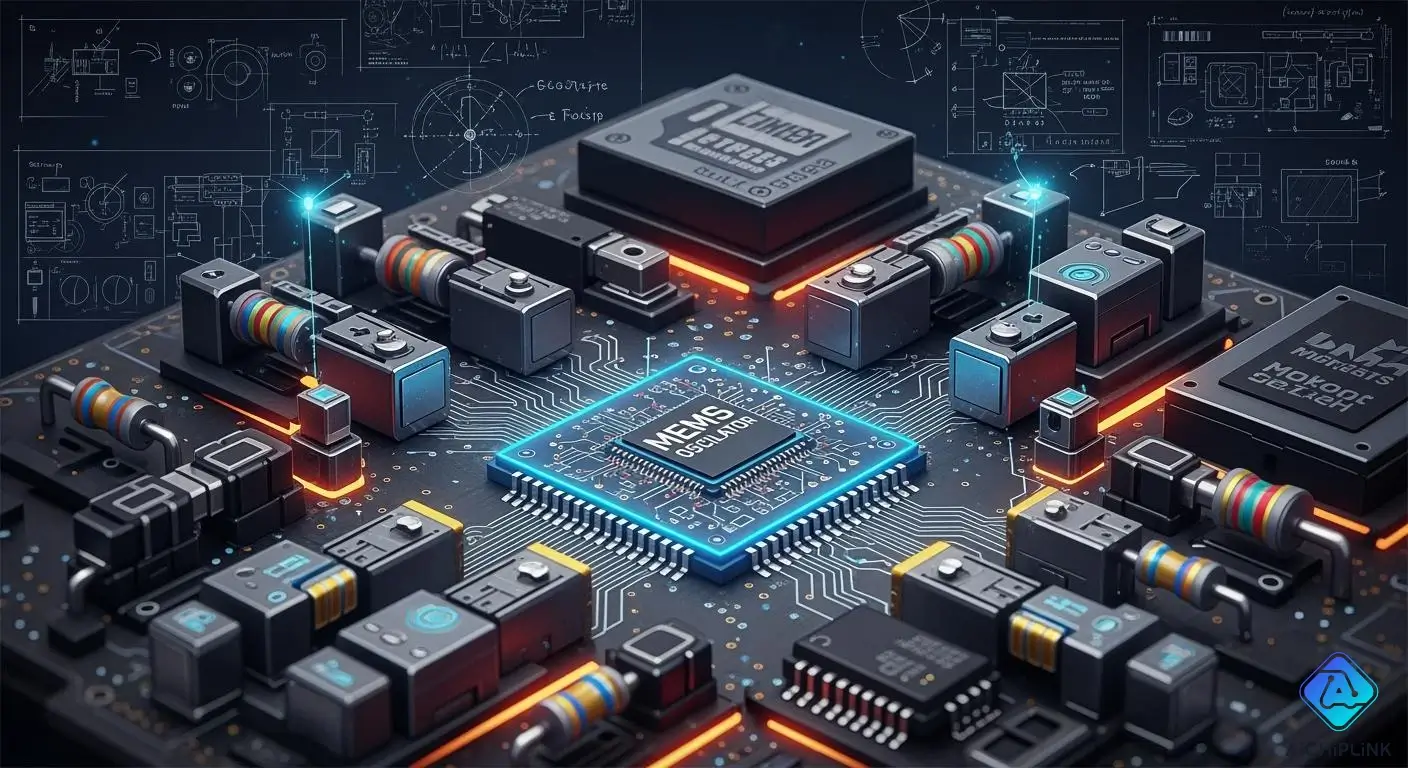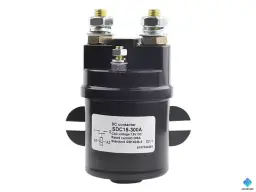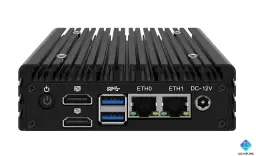
You can get more design choices with Abracon's AMMLP MEMS oscillators, which offer exceptional design flexibility. These devices use little power and remain very stable. You can also change their settings, allowing them to work well in a variety of electronics. You get two output choices and strong protection from the environment. These features help you build products you can trust. The table below lists features that are important for engineers and product developers:
| Feature | Description |
|---|---|
| Packaging Technologies | Lets you use more than one device together and works with machines that place parts. |
| Integration Capabilities | Helps make smaller circuit boards and flexible designs without big changes. |
| Programmability | Lets you use different frequencies and change settings in one device. |
Key Takeaways
-
MEMS oscillators give designers more choices. They let you set different frequencies. This makes them good for many types of projects.
-
These oscillators use less energy. This helps battery-powered devices last longer.
-
Tight stability MEMS oscillators keep timing correct. They work well even in tough conditions. This means they are dependable.
-
MEMS oscillators are very small. They fit easily into tiny designs. This helps save space on circuit boards.
-
MEMS oscillators last a long time. They break less often than quartz oscillators. This helps lower maintenance costs.
Key Features for Design Flexibility
Programmable MEMS Oscillators
Programmable MEMS oscillators give you more ways to design. You can pick the frequency that fits your project. These devices let you change settings for different uses. This means you control timing and how well things work. They support many output formats, so they fit digital systems. Their small size lets you use them in tight spaces. The table below lists technical details that make these oscillators a good choice for many designs:
| Specification | Description |
|---|---|
| Frequency Range and Resolution | You can choose from many frequencies and fine-tune them. |
| Stability and Accuracy | Timing stays steady, even if temperature or voltage changes. |
| Jitter and Phase Noise | Signals stay clean, which helps fast digital communication. |
| Output Formats | Works with CMOS, LVDS, HCSL, and differential signals. |
| Supply Voltage and Power Consumption | Uses less power, so it is good for battery devices. |
| Package Types | Fits into small places, like 2.0 × 1.6 mm, for tiny designs. |
Tip: One programmable MEMS oscillator can work for many projects. This saves you time and makes designing easier.
Tight Stability MEMS Oscillators
Tight stability MEMS oscillators keep timing correct in all conditions. They are more stable than most quartz oscillators. You can count on them, even when temperatures change. They last a long time, with a mean time between failure of about 500 million hours. This is much longer than quartz. You do not have to worry about activity dips, so your systems stay reliable. Here are reasons why tight stability MEMS oscillators help your design:
-
You get better frequency stability and less jitter, so timing is precise.
-
MEMS oscillators last longer than quartz, with higher mean time between failure.
-
Temperature changes do not cause problems, so timing stays steady.
-
Your digital systems work better because timing stays accurate.
Low Power and Dual Output
MEMS oscillators help you save energy. They use features like programmable voltage swing and dynamic frequency scaling. These features let you control power use, which is good for battery devices. You can also change output drive strength to match what you need for saving energy.
Dual output gives you more choices. One device can give two frequencies at once. This makes your design easier and saves space on your board. You also spend less money and manage supplies better. Dual output MEMS oscillators are smart for systems that need more than one frequency.
Note: MEMS oscillators come in many package sizes, even very small chip-scale packages. You can use them in wearables, IoT devices, and other small designs. They are much tougher than quartz, with up to 50 times more shock resistance. This makes them a good choice for tough environments.
Design Flexibility Benefits
Simplified PCB Integration
MEMS oscillators make printed circuit board design easier. They use standard silicon methods, so you add them easily. You do not need extra circuits, which saves time. MEMS oscillators fit in modern packages and work with machines. You can change the frequency without moving parts on your board. This gives you more control and makes things flexible. It helps you keep track of parts and get them faster. You get strong performance and trust these devices, even in hard places. MEMS oscillators do not break from shaking or bumps, so timing stays right.
Tip: MEMS oscillators help you save money on redesigns. You can change settings while building, which lets you customize and save energy.
Rapid Prototyping with MEMS Oscillators
MEMS oscillators help you build prototypes faster. You do not need to match circuits or pick special capacitors. These devices work well with other silicon parts, making building easier. You do not wait for special crystals, so you finish faster and save money. MEMS oscillators give steady timing, so your first try works well.
-
You get good timing for digital systems.
-
MEMS oscillators last a long time and rarely fail.
-
You can change frequency fast, which helps you customize.
-
MEMS oscillators use less power, so batteries last longer.
Versatility Across Applications
MEMS oscillators work in many types of electronics. You can use them in IoT, cars, wearables, and more. Their small size lets you put them in tight spots. MEMS oscillators work better than quartz and use less power. They do not break from shaking, bumps, or heat, so they last longer. You can make many MEMS oscillators at once, so they cost less and are easy to get. New MEMS oscillators are very precise, with TCXOs as good as ±0.1 ppm.
| Key Factor | Description |
|---|---|
| Small Form Factor | MEMS oscillators are small, so they fit in many devices. |
| Improved Performance Characteristics | They keep better time and use less power than quartz. |
| Resistance to Environmental Factors | MEMS oscillators do not break from shaking or heat, so they last longer. |
| Manufacturing Efficiency | You can make many at once, so they cost less and are easy to find. |
| Application Versatility | You can use them in many things, like IoT and cars. |
| High Precision | New TCXOs are very accurate, better than most quartz. |
MEMS oscillators help you save energy and work well in your designs. You can trust their timing in digital systems. Their options let you meet different needs. You can control frequency and power use, so your products work better and last longer.
Real-World Use Cases
Wearables and Power-Sensitive Devices
You want your wearable to last longer and work well. MEMS oscillators help you do this. They use less energy, so batteries last longer. These parts are tiny and fit in small spaces. This is great for slim fitness trackers and smartwatches. You get better timing and control of frequency. This keeps your device accurate.
Here is a table that shows how MEMS oscillators and quartz oscillators compare in wearables:
| Feature | MEMS Oscillators | Quartz Oscillators |
|---|---|---|
| Size | Up to 1,000 times smaller | Larger mass and crystalline structure |
| Reliability | Failure rates up to 50 times lower | Prone to frequency drift and failure |
| Power Efficiency | Reduces power consumption by 30-50% | Higher power consumption |
| EMI Immunity | Up to 35 dB better in differential configs | More susceptible to EMI |
| Integration Flexibility | Seamless with semiconductor packages | Limited integration flexibility |

-
MEMS oscillators can cut power use by half.
-
You get up to 50 times better reliability.
-
EMI immunity is up to 35 dB better.
Tip: MEMS oscillators help you make wearables smaller, lighter, and more efficient.
Industrial and IoT Applications
You need devices that work well in tough places. MEMS oscillators give strong performance and stay stable in harsh spots. They resist shock, vibration, and big temperature changes. Your industrial and IoT devices keep good timing, even when things change. MEMS oscillators last longer and fail less, so you save on repairs.
Here is a table that compares MEMS oscillators and quartz oscillators in industrial and IoT uses:
| Feature | MEMS Oscillators | Quartz Oscillators |
|---|---|---|
| Size | Up to 1,000 times smaller and lighter | Larger mass and crystalline structure |
| Environmental Resilience | Superior to mechanical stress and changes | Prone to frequency drift and cracking |
| Reliability | Failure rates up to 50 times lower | More likely to fail under shock and vibration |
| Maintenance Costs | Lower due to longer lifespan | Higher due to increased downtime |
| Temperature Stability | Maintains consistent performance | Prone to frequency shifts under stress |
| Applications | Aerospace, defense, industrial, automotive | Limited in harsh environments |
MEMS oscillators fail much less in hard places. You get better timing and frequency control. This helps your devices work well in factories, cars, or outside sensors. MEMS oscillators help you save energy and give you real-world reliability in every use.
MEMS vs Quartz Oscillators
Flexibility and Stability Comparison
MEMS and quartz oscillators are different in many ways. MEMS oscillators use tiny micromechanical resonators. These parts are small, tough, and save energy. You can set them to any frequency you want. This gives you more choices for your projects. MEMS oscillators fit into small smd packages. You can use them in tight spaces. They work in very hot or cold places, from -40 to +150°C. This makes them great for devices that need to last and work well.
Quartz oscillators have fixed frequencies. They are very accurate and stable for a long time. This is important for things that need perfect timing. But quartz parts are bigger and break more easily. They do not handle shock or shaking as well as MEMS oscillators.
Here is a table to help you see the main differences:
| Feature | MEMS Oscillators | Quartz Oscillators |
|---|---|---|
| Size and Integration | Compact, easy to integrate | Larger, less suitable for miniaturization |
| Frequency Stability | High, suitable for most uses | Exceptional, best for precision |
| Power Consumption | Low, ideal for battery devices | Higher, less efficient |
| Reliability | Strong against shock and vibration | Can fail under stress |
| Programmability | Programmable to any frequency | Fixed frequency |
| Environmental Resilience | Excellent | Limited |
Note: Some new MEMS oscillators are as stable as quartz. They can even be better when temperatures change fast.
Choosing MEMS for Modern Designs
MEMS oscillators are good when you need small size and flexibility. You can change their frequency quickly. This helps you finish your designs faster. You do not need extra parts like capacitors. This makes your job easier and helps with getting supplies. MEMS oscillators also work better in tough places.
You can find MEMS oscillators in many new devices:
-
AI data centers use them for good timing.
-
Aerospace and cars need them for real-time work.
-
Communication networks use them for steady data.
MEMS oscillators might cost more at first. But you save money later because they last longer. You do not spend as much on repairs. Quartz oscillators may look cheaper, but they can cost more if they break or need extra work.
MEMS oscillators give you the flexibility, accuracy, and reliability needed for today’s electronics.
You get more ways to design with Abracon's AMMLP MEMS oscillators. These devices work well and stay steady in many projects. Engineers say they are reliable and help save money:
-
MEMS oscillators fail less than 1 part per million and last over 2 billion hours.
-
They handle shaking and bumps better than quartz crystals.
-
You pay less for fixing or replacing parts.
Check Abracon's resources or ask their team to see how these oscillators can help your next project.

Written by Jack Elliott from AIChipLink.
AIChipLink, one of the fastest-growing global independent electronic components distributors in the world, offers millions of products from thousands of manufacturers, and many of our in-stock parts is available to ship same day.
We mainly source and distribute integrated circuit (IC) products of brands such as Broadcom, Microchip, Texas Instruments, Infineon, NXP, Analog Devices, Qualcomm, Intel, etc., which are widely used in communication & network, telecom, industrial control, new energy and automotive electronics.
Empowered by AI, Linked to the Future. Get started on AIChipLink.com and submit your RFQ online today!
Frequently Asked Questions
What makes MEMS oscillators better for flexible designs?
You can set MEMS oscillators to many frequencies. This means one part works for many projects. You save time and space on your board. MEMS oscillators come in small packages.
How do MEMS oscillators handle tough environments?
MEMS oscillators can take shock, vibration, and big temperature changes. You can use them where quartz might break. They keep working in factories, cars, or outside.
Can I use MEMS oscillators in battery-powered devices?
Yes! MEMS oscillators use less power than quartz. Your batteries last longer in wearables, sensors, and IoT devices. You can also change settings to save more energy.
Are MEMS oscillators easy to add to my PCB?
You can put MEMS oscillators on your board with normal machines. You do not need extra parts. You can change the frequency without moving anything. This makes designing faster.
Do MEMS oscillators cost more than quartz?
MEMS oscillators might cost a little more at first. But you save money later because they last longer and break less. You also spend less on fixing or replacing them.














